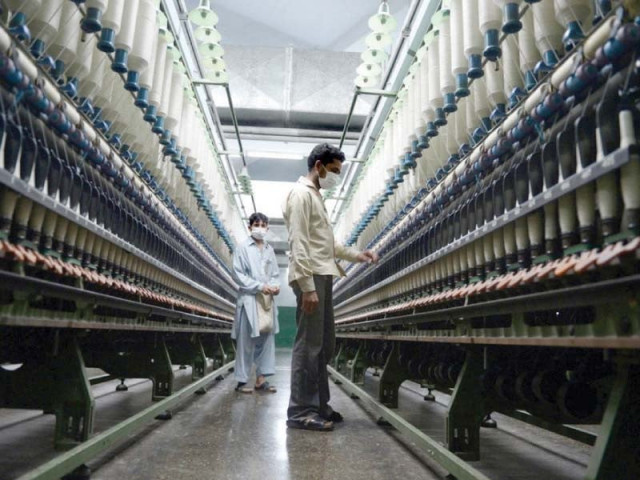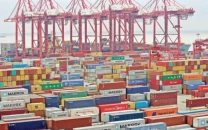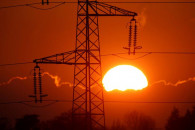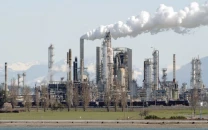Big industries’ output edges down
High policy rate, increasing business cost hit manufacturing sector hard

The production of goods by Pakistan’s big industries slowed down during the first seven months of the current fiscal year and their growth fell 0.52% year-on-year as the manufacturing sector took a hit from the record high interest rate and the increasing cost of doing business.
Pakistan Bureau of Statistics (PBS) reported on Friday that the growth in output of large-scale manufacturing (LSM) industries decreased less than 1% during July-January period of financial year 2023-24.
Big industrial units are suffering from restrictions on imports, the highest-ever interest rate of 22% and a constant increase in utility prices.
PBS released the manufacturing output figures three days before a scheduled meeting of the Monetary Policy Committee (MPC). The central bank will on Monday decide the policy rate for the next one and a half month amid hopes that the rate reduction cycle will begin soon as it stayed at the highest level for a longer period.
Finance Minister Muhammad Aurangzeb said this week that due to a substantial slowdown in inflation, the interest rate may start coming down from the current fiscal year.
The MPC’s decision will be guided by the outcome of the ongoing talks between Pakistan and the International Monetary Fund (IMF) for the release of the last loan tranche of $1.1 billion. In inaugural sessions, IMF Mission Chief Nathan Porter termed inflation still high.
The LSM trend indicates that this year Pakistan’s gross domestic product (GDP) growth may remain around 2%. The government has targeted economic growth of 3.5% for the year.
During the first quarter (Jul-Sept) of the current fiscal year, the economy grew by 2.1% on the back of expansion of the agriculture sector. The National Accounts Committee will approve second quarter’s GDP growth figure by the end of March.
Caretaker finance minister Dr Shamshad Akhtar said last month that economic growth may increase by 3% during the second quarter, thanks to a healthy growth in the agriculture sector.
PBS reported that LSM output increased by 1.8% during January over the same month a year ago. In December, the growth rate was 3.4%, which has now slowed down further. On a month-on-month basis, the output growth was flat.
Since large industries contribute heavily to revenue collection and job creation, any change in their growth levels impacts the government and business sentiment across the board.
LSM contributes nearly one-tenth to the total national output, however, a constant decline in its share and growth may cause a lot of problems for the government, which is already struggling to create new job opportunities for the bulging workforce.
Main contributors to the overall negative growth of 0.52% include tobacco, textile, paper and board, iron and steel products, fabricated metal, computer, electronics and optical products, automobiles, electrical equipment, non-metallic minerals and transport equipment.
The performance of the auto industry remains subdued due to massive increases in input prices and the tightening auto financing. Car production decreased by 48% and sales dropped by nearly 49%. Trucks and buses’ production fell by 58% and their sales dipped nearly half.
During the seven-month period from July to January FY24, 12 out of 22 industries recorded a positive growth. These included food, beverages, clothing, leather products, coke and petroleum products, chemicals, pharmaceuticals, rubber products, wood products, furniture, machinery and equipment, and footballs.
Pakistan’s unemployment rate remains high and a constant sluggish growth in the industrial sector is reducing employment opportunities.
Age and gender-wise unemployment analysis demonstrates that the youth between 15 and 24 years has the highest unemployment rate of 11.1%, followed by the age group of 25-34 years having a 7.3% unemployment ratio.
Unemployment among graduates is as high as 23.5%. The high unemployment among the educated youth also points to the irrelevance of general education to market needs. Moreover, there is a lack of entrepreneurial culture and necessary support.
Public spending on education and health stands around 2% of GDP compared to the average of 3.3% in other South Asian countries.
High percentages of out-of-school children have led to low education levels and low skilled labour, which mostly finds employment in the informal sector.
Pakistan’s technical and vocational education and training (TVET) programmes face multiple challenges related to access, coverage, governance and quality. Resultantly, there is a mismatch between the market demand and supply of skilled manpower, particularly for the international market.
Published in The Express Tribune, March 16th, 2024.
Like Business on Facebook, follow @TribuneBiz on Twitter to stay informed and join in the conversation.



















COMMENTS
Comments are moderated and generally will be posted if they are on-topic and not abusive.
For more information, please see our Comments FAQ